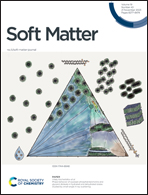Glass formation and dynamics of model polymer films with one versus two active interfaces
Abstract
Polymers and other glass-forming liquids can exhibit profound alterations in dynamics in the nanoscale vicinity of interfaces, over a range appreciably exceeding that of typical interfacial thermodynamic gradients. The understanding of these dynamical gradients is particularly complicated in systems with internal or external nanoscale dimensions, where a gradient nucleated at one interface can impinge on a second, potentially distinct, interface. To better understand the interactions that govern system dynamics and glass formation in these cases, here we simulate the baseline case of a glass-forming polymer film, over a wide range of thickness, supported on a dynamically neutral substrate that has little effect on nearby dynamics. We compare these results to our prior simulations of freestanding films. Results indicate that dynamical gradients in our simulated systems, as measured based upon translational relaxation, are simply truncated when they impinge on a secondary surface that is locally dynamically neutral. Altered film behavior can be described almost entirely by gradient effects down to the thinnest films probed, with no evidence for finite-size effects sometimes posited to play a role in these systems. Finally, our simulations predict that linear gradient overlap effects in the presence of symmetric dynamically active interfaces yield a non-monotonic variation of the whole free standing film stretching exponent (relaxation time distribution breadth). The maximum relaxation time distribution breadth in simulation is found at a film thickness of 4–5 times the interfacial gradient range. Observation of this maximum in experiment would provide an important validation that the gradient behavior observed in simulation persists to experimental timescales. If validated, observation of this maximum would potentially also enable determination of the dynamic gradient range from experimental mean-film measurements of film dynamics.



 Please wait while we load your content...
Please wait while we load your content...